
William Kissam Vanderbilt I was an American heir, businessman, philanthropist and horsebreeder. Born into the Vanderbilt family, he managed his family's railroad investments.
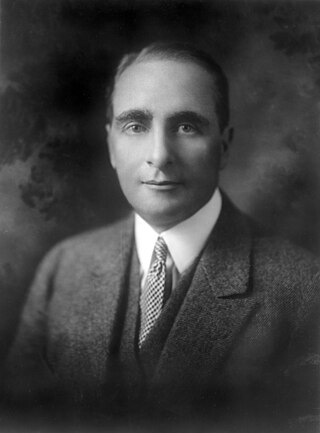
Ogden Livingston Mills was an American lawyer, businessman and politician. He served as United States Secretary of the Treasury in President Herbert Hoover's cabinet, during which time Mills pushed for tax increases, spending cuts and other austerity measures that would deepen the economic crisis. A member of the Republican Party, Mills also represented New York in the United States House of Representatives, served as Undersecretary of the Treasury during the administration of President Calvin Coolidge, and was the Republican nominee in the 1926 New York gubernatorial election.
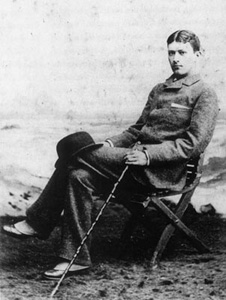
Ogden Codman Jr. was an American architect and interior decorator in the Beaux-Arts styles, and co-author with Edith Wharton of The Decoration of Houses (1897), which became a standard in American interior design.

The Knickerbocker Club is a gentlemen's club in New York City that was founded in 1871. It is considered to be the most exclusive club in the United States and one of the most aristocratic gentlemen's clubs in the world.
The Peithologian Society was an undergraduate debate society at Columbia University. It was founded in 1806, four years after Columbia's first literary society, the Philolexian Society, by freshmen who were disenfranchised by Philolexian's requirement that its members be upperclassmen. Its emphasis on debate, composition, and rhetoric was similar to Philo's literary aims, and the two societies shared other superficial characteristics as well. Philo adopted light blue as its official color, while Peithologian adopted white. Whereas Philolexian's symbol was a rising sun, Peithologian's was a star. Its Latin motto was "Vitam Impendere Vero" meaning, roughly, "To devote one's life to truth."
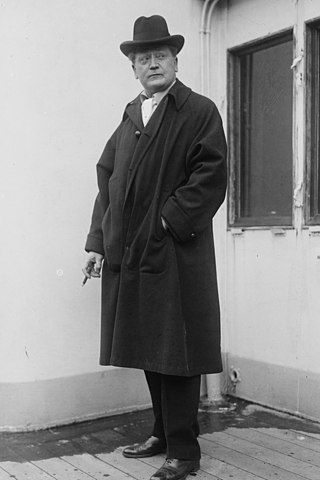
Whitney Warren was an American Beaux-Arts architect who founded, with Charles Delevan Wetmore, Warren and Wetmore in New York City, one of the most prolific and successful architectural practices in the US.
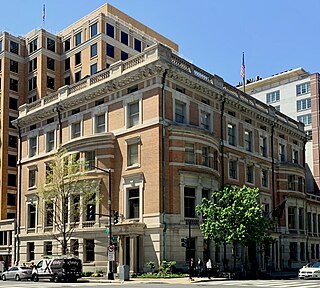
The Metropolitan Club of the City of Washington is a private club in Washington, D.C. In September 1983, The New York Times called it "Washington's oldest and most exclusive club".

Margaret Louisa Vanderbilt Shepard was an American heiress and a member of the prominent Vanderbilt family. As a philanthropist, she funded the YMCA, helping create a hotel for guests of the organization. She was married to prominent New York City lawyer, banker, and newspaper editor Elliott Fitch Shepard.
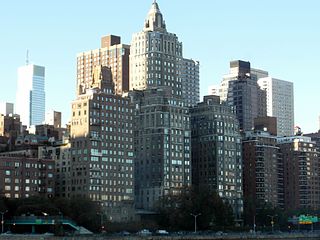
River House is a co-op apartment building located at 435 East 52nd Street in Manhattan, New York City.

655 Park Avenue is a Georgian-style co-op residential building on Manhattan's Upper East Side, located on Park Avenue between 67th Street and 68th Street, adjacent to the Park Avenue Armory. It was developed in 1924 by Dwight P. Robinson & Company. The building at 655 Park Avenue was designed by architects James Edwin Ruthven Carpenter, Jr., often referred to by the initials "J.E.R. Carpenter", and Mott B. Schmidt. Carpenter is considered the leading architect for luxury residential high-rise buildings in New York City in the early 1900s, while Schmidt is known for his buildings in the American Georgian Classical style, including Sutton Place and houses for New York City's society figures and business elite.

Ogden Goelet was an American heir, businessman and yachtsman from New York City during the Gilded Age. With his wife, he built Ochre Court in Newport, Rhode Island, his son built Glenmere mansion, and his daughter, Mary Goelet, married Henry Innes-Ker, 8th Duke of Roxburghe.

Richard Thornton Wilson was a multimillionaire American investment banker known for being the father of five children who all married into prominent families during the Gilded Age of New York.

Marshall Orme Wilson was an American banker and prominent member of New York Society during the Gilded Age.
Marshall Orme Wilson Jr. was an American diplomat and member of the Astor family.

Caroline Schermerhorn Astor Wilson was an American heiress, social leader, and prominent member of New York society.

647 Fifth Avenue, originally known as the George W. Vanderbilt Residence, is a commercial building in the Midtown Manhattan neighborhood of New York City. It is along the east side of Fifth Avenue between 51st Street and 52nd Street. The building was designed by Hunt & Hunt as one of the "Marble Twins", a pair of houses at 645 and 647 Fifth Avenue. The houses were constructed between 1902 and 1905 as Vanderbilt family residences. Number 645 was occupied by William B. Osgood Field, while number 647 was owned by George W. Vanderbilt and rented to Robert Wilson Goelet; both were part of the Vanderbilt family by marriage.
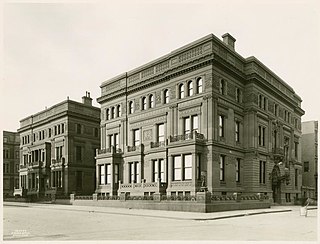
The Triple Palace, also known as the William H. Vanderbilt House, was an elaborate mansion at 640 Fifth Avenue between 51st Street and 52nd Street in Midtown Manhattan, New York City. The urban mansion, completed in 1882 to designs by John B. Snook and Charles B. Atwood, was owned by members of the Vanderbilt family. It was composed of two portions: a single-family unit to the south and a two-family unit to the north. William Henry Vanderbilt owned and lived in the southern portion. Two of his daughters, Emily Thorn Vanderbilt and Margaret Louisa Vanderbilt Shepard, along with their respective families, occupied the two residences in the northern portion.

















